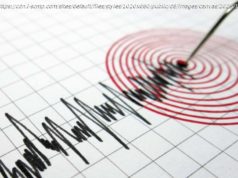New research, however, suggests timing is an important part of the learning process — at least for Japanese first graders learning hiragana script.
June 30 (UPI) — Most research suggests handwriting is combination of acquired skills: the understanding of how different letters are shaped and the hand-eye coordination used to replicate those shapes with a pen.
New research, however, suggests timing is an important part of the learning process — at least for Japanese first-graders learning hiragana script.
As Japanese students practiced painting the phonetic symbols, researchers from Kobe University had the first-graders focus on the stroke patterns and rhythm required to replicate each symbol.
When scientists observed the handwriting, they found distinct strokes emerged — stop, sweep or jump — for each symbol. They also observed the emergence of distinct timing patterns for different symbols.
The findings — detailed in the journal Developmental Psychobiology — suggests understanding the timing of each stroke pattern is an important part of handwriting learning. It’s likely, researchers say, that the importance of timing isn’t unique to Japanese students, but is also vital to students learning to write the Latin alphabet.
„These aspects of handwriting development have been largely neglected in research carried out in Latin alphabet communities, “ Kobe researchers wrote in a news release .






